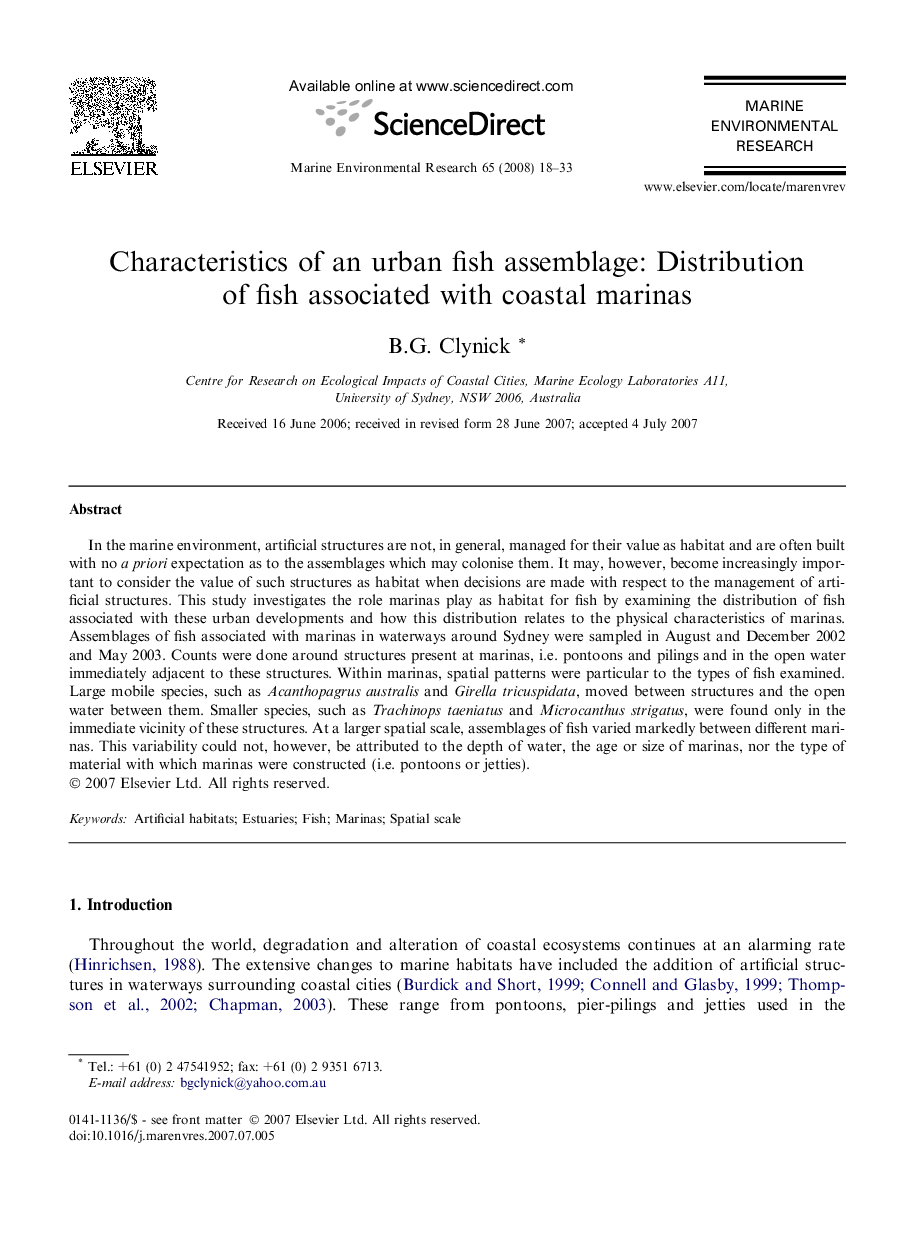| Article ID | Journal | Published Year | Pages | File Type |
|---|---|---|---|---|
| 4551637 | Marine Environmental Research | 2008 | 16 Pages |
Abstract
In the marine environment, artificial structures are not, in general, managed for their value as habitat and are often built with no a priori expectation as to the assemblages which may colonise them. It may, however, become increasingly important to consider the value of such structures as habitat when decisions are made with respect to the management of artificial structures. This study investigates the role marinas play as habitat for fish by examining the distribution of fish associated with these urban developments and how this distribution relates to the physical characteristics of marinas. Assemblages of fish associated with marinas in waterways around Sydney were sampled in August and December 2002 and May 2003. Counts were done around structures present at marinas, i.e. pontoons and pilings and in the open water immediately adjacent to these structures. Within marinas, spatial patterns were particular to the types of fish examined. Large mobile species, such as Acanthopagrus australis and Girella tricuspidata, moved between structures and the open water between them. Smaller species, such as Trachinops taeniatus and Microcanthus strigatus, were found only in the immediate vicinity of these structures. At a larger spatial scale, assemblages of fish varied markedly between different marinas. This variability could not, however, be attributed to the depth of water, the age or size of marinas, nor the type of material with which marinas were constructed (i.e. pontoons or jetties).
Related Topics
Physical Sciences and Engineering
Earth and Planetary Sciences
Oceanography
Authors
B.G. Clynick,
